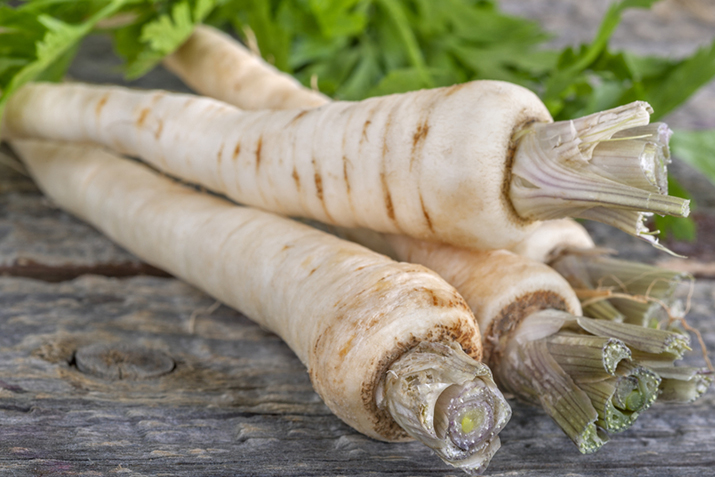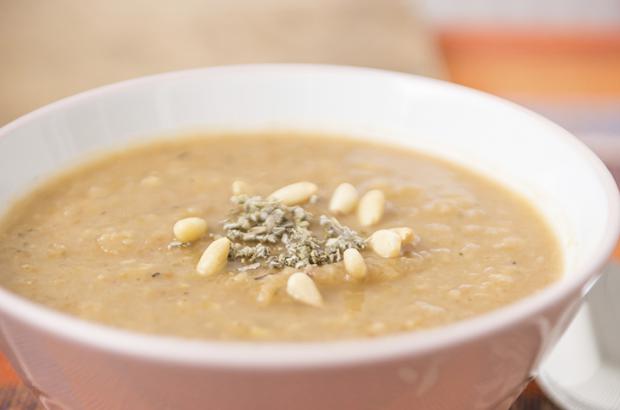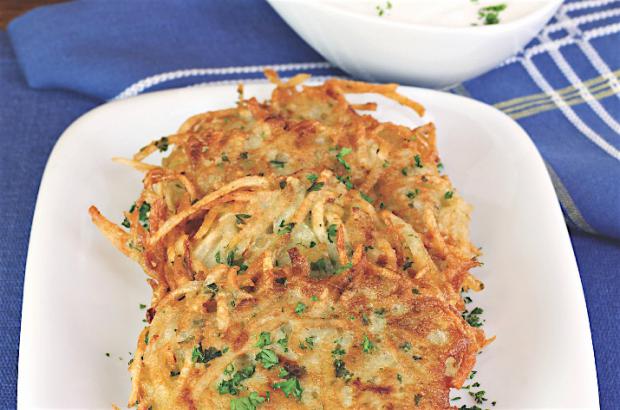Article
Parsnips

Have a sweet tooth? Parsnips are the veggie for you. Half of the carbohydrates in this hardy root crop are sugar (the rest are complex carbs). In fact, before cane sugar became readily available, Europeans used parsnips as a sweetener in baking.
A relative of carrots and celery, the creamy colored, tuberous plant is a biennial but usually grown as an annual. Its sweet, nutty flavor isn't fully developed until the roots have been exposed to almost freezing temps—which converts the starches to sugars—for a few weeks in the fall and early winter. It’s best harvested after a hard frost but before the ground freezes.
An excellent source of dietary fiber, parsnips are also a good source of vitamins C and K and manganese. They also provide folate, pantothenic acid and phosphorus—all at only about 55 calories per half-cup serving.
There are many varieties of parsnips, and they differ in the shape of the taproots. The most common varieties are Gladiator and Javelin. Learn more about these and other parsnip varieties on Cornell University's Vegetable Varieties for Gardeners website.
If parsnips are unfamiliar to you, take heart. They're easy to prepare and very versatile. Simply wash them in cold water, scrubbing the skin. You can also gently peel it if you prefer, but don't get carried away; much of the flavor is contained just under the skin. Cut off the tops and bottoms, then decide amongst the myriad ways of serving, including raw in salads, steamed, roasted, boiled, mashed, folded in bread and cake batters, tossed in stir fries, fried in fritters or baked into chips or "fries" (especially delectable with a bold horseradish dipping sauce).
How fitting that parsnips make a rich, comforting soup, given their arrival in early winter. This Parsnip Apple Soup, served with a dollop of chevre and rustic bread, makes a picture perfect—and palate pleasing—seasonal lunch or dinner.
Parsnips pair well with other hearty vegetables, too. In fact, "neeps and tatties" (parsnips and potatoes) is a well-loved Scottish dish. Add a couple of parsnips to your mashed potatoes to add a hint of sweetness. Parsnips also partner nicely with apples and cauliflower in the mashing bowl. Don't forget sweet potatoes: Try these surprising Sweet Potato and Parsnip Latkes, crowned with an apple sour cream topping.
Grains and other root veggies complement the distinctive flavor of parsnips, too. For any autumn or winter celebration, Roasted Root Vegetable Risotto with Fresh Sage offers seasonal perfection.
While they're often available year round, the peak season for parsnips is during fall and winter—mid-August through March. When shopping for parsnips, choose small to medium vegetables, because the large ones can be woody. Look for blemish-free, firm, beige skin, free of browning.
Parsnips are easy to store. Wrap them in a paper towel and place in a plastic bag (or vegetable storage bag), then tuck in the crisper of the refrigerator, where they'll keep for a couple of weeks. If you have something akin to a root cellar, you can store parsnips—as other root crops—for months.
Parsnips can also be frozen. Simply wash, peel and cut the parsnips, then blanch for two minutes. Place the pieces in freezer-safe containers and freeze for up to a year—until you bring in the next fresh harvest from your garden or co-op.












